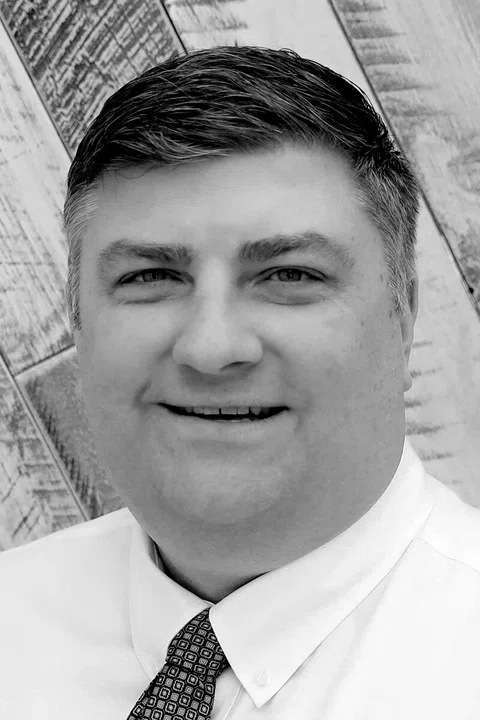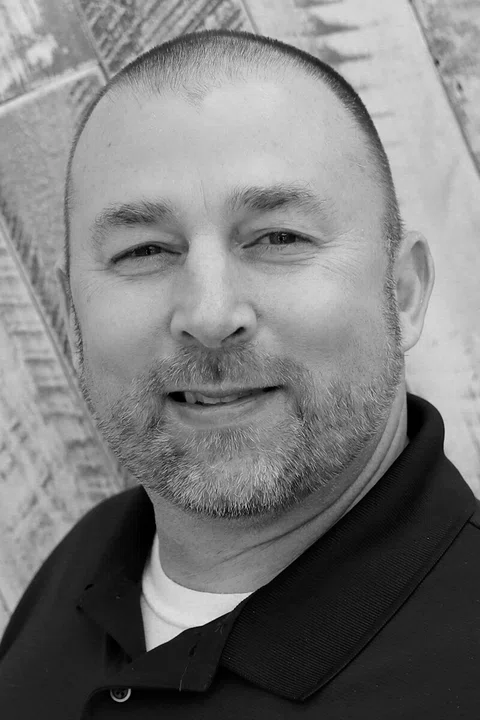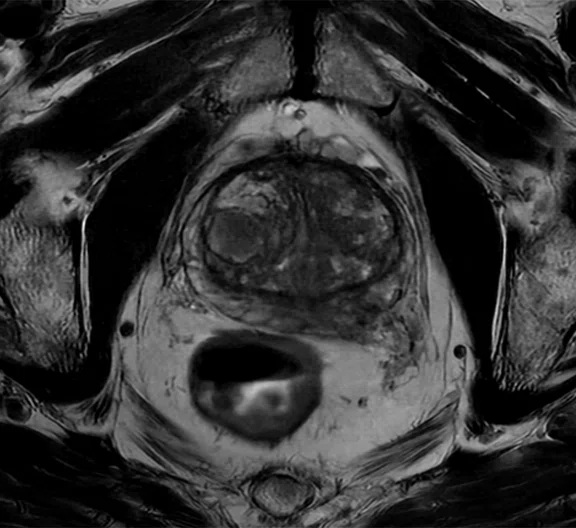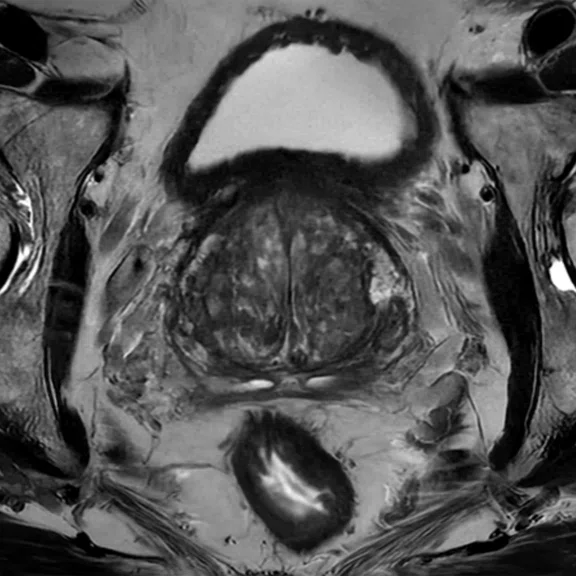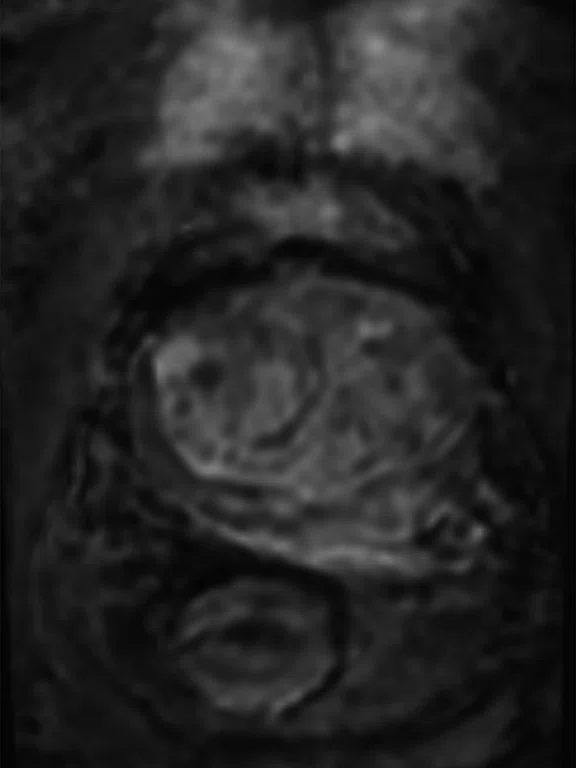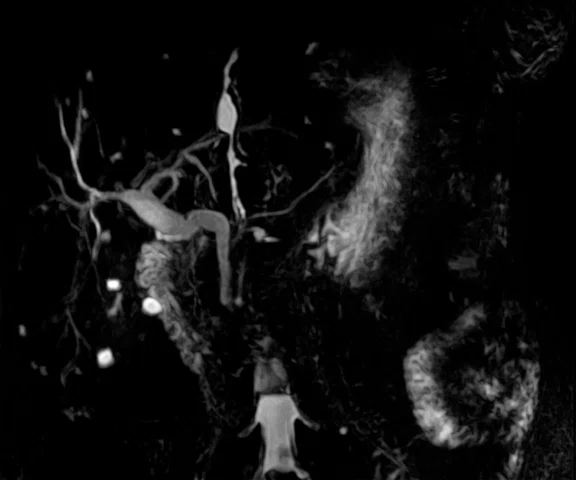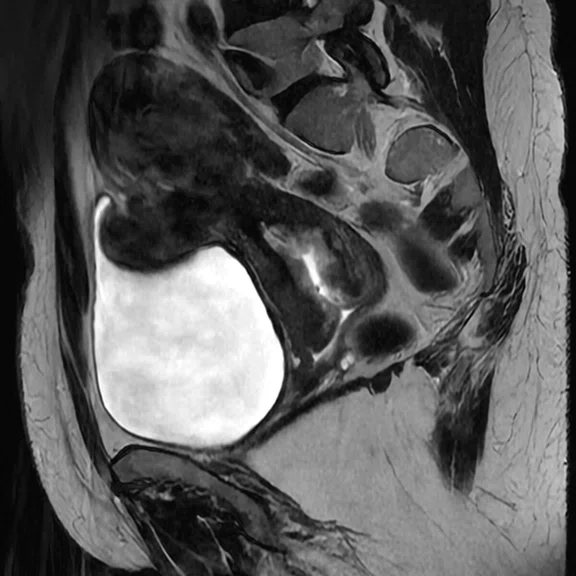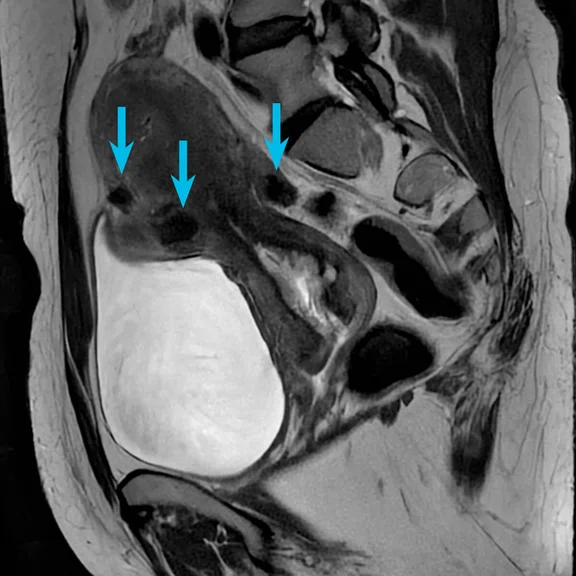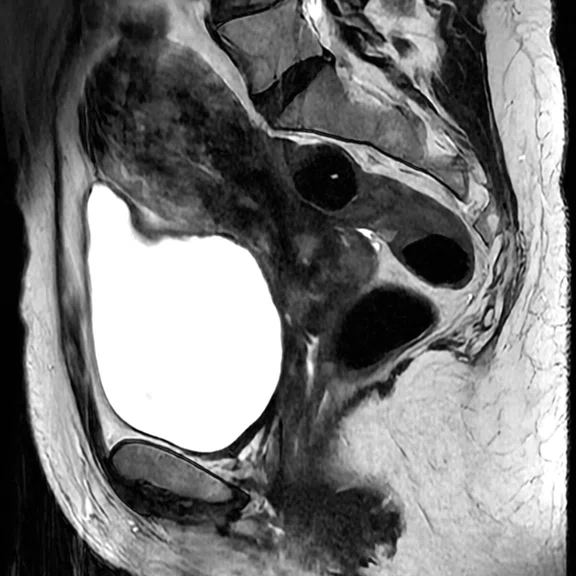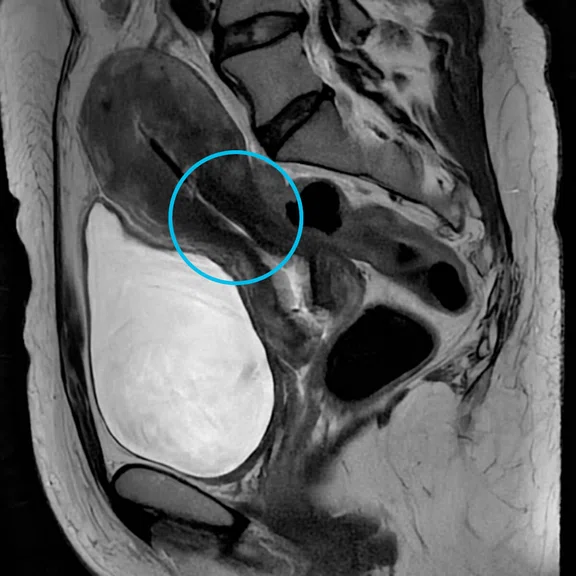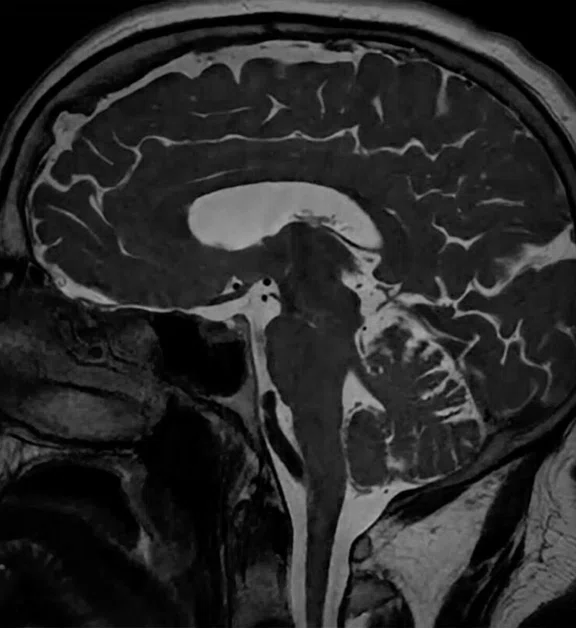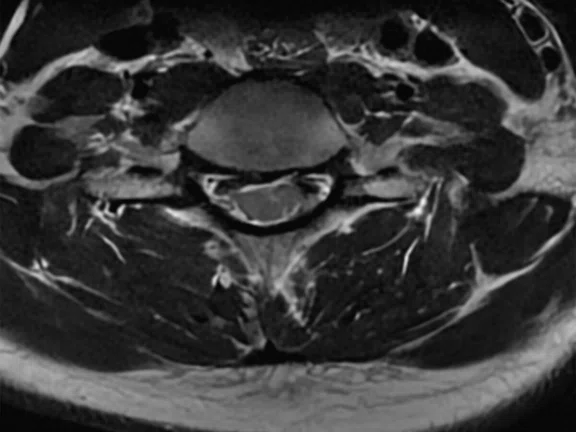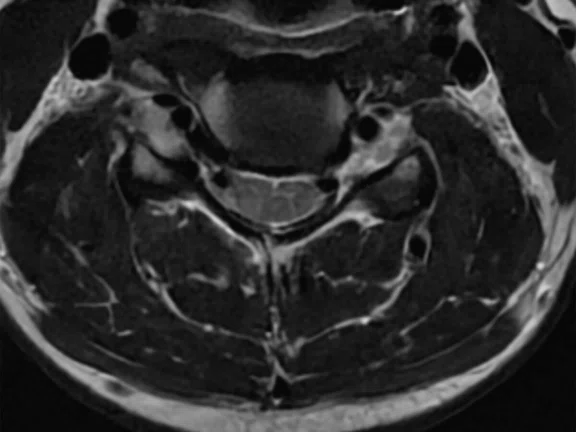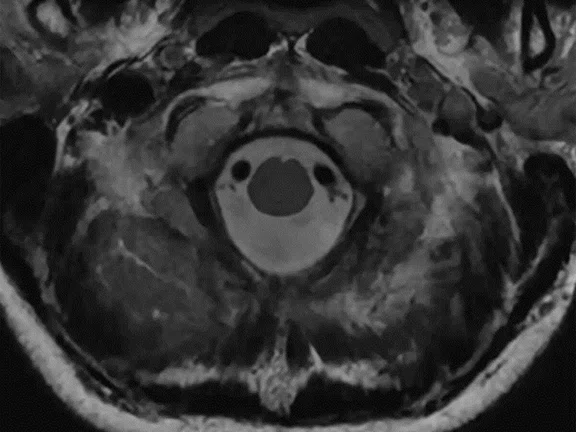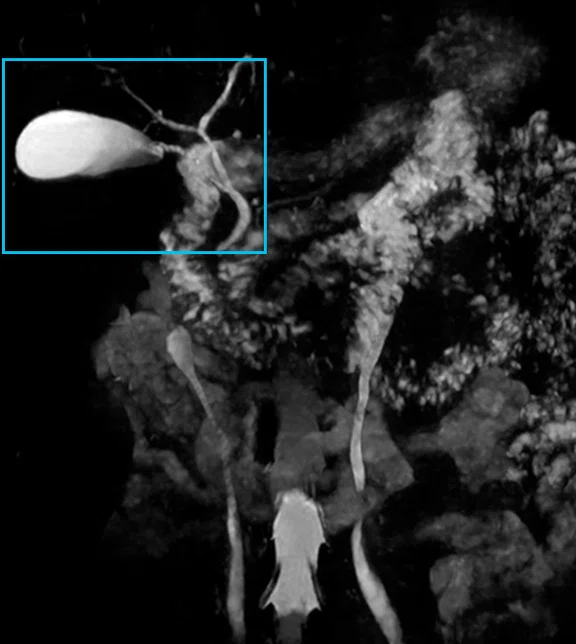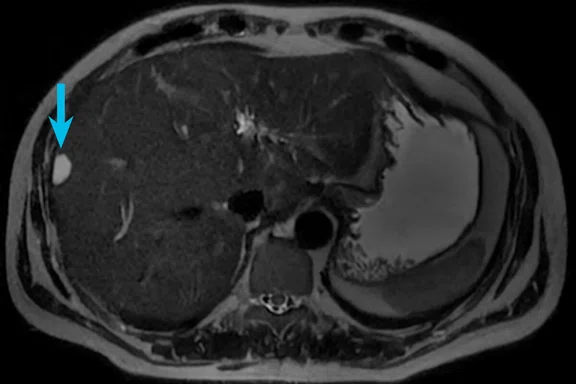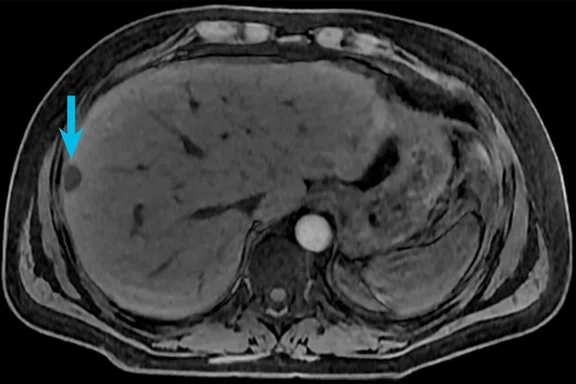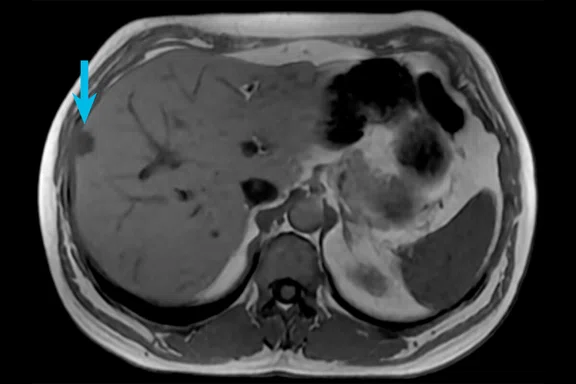A
Figure 2.
Coronal 3D T2 MRCP with respiratory triggering, acquired on the SIGNA™ Architect with AIR™ Recon DL 3D, AIR™ AA Coil, HyperSense and HyperCube, 4:07 min.
A
Figure 3.
Female pelvis exam of the uterus on the SIGNA™ HDxt 1.5T upgraded to MR 30 for SIGNA™. (A, C) Conventional sagittal T2 FSE with AIR™ Recon DL, 0.6 x 0.9 x 3 mm, 3:16 min. and (B, D) sagittal T2 FSE with AIR™ Recon DL PROPELLER, 0.7 X 0.7 x 3 mm, 3:56 min. Note with AIR™ Recon DL PROPELLER, (B) the fibroids are more visible and (D) the anatomy is more visible, including the endometrium.
B
Figure 3.
Female pelvis exam of the uterus on the SIGNA™ HDxt 1.5T upgraded to MR 30 for SIGNA™. (A, C) Conventional sagittal T2 FSE with AIR™ Recon DL, 0.6 x 0.9 x 3 mm, 3:16 min. and (B, D) sagittal T2 FSE with AIR™ Recon DL PROPELLER, 0.7 X 0.7 x 3 mm, 3:56 min. Note with AIR™ Recon DL PROPELLER, (B) the fibroids are more visible and (D) the anatomy is more visible, including the endometrium.
C
Figure 3.
Female pelvis exam of the uterus on the SIGNA™ HDxt 1.5T upgraded to MR 30 for SIGNA™. (A, C) Conventional sagittal T2 FSE with AIR™ Recon DL, 0.6 x 0.9 x 3 mm, 3:16 min. and (B, D) sagittal T2 FSE with AIR™ Recon DL PROPELLER, 0.7 X 0.7 x 3 mm, 3:56 min. Note with AIR™ Recon DL PROPELLER, (B) the fibroids are more visible and (D) the anatomy is more visible, including the endometrium.
D
Figure 3.
Female pelvis exam of the uterus on the SIGNA™ HDxt 1.5T upgraded to MR 30 for SIGNA™. (A, C) Conventional sagittal T2 FSE with AIR™ Recon DL, 0.6 x 0.9 x 3 mm, 3:16 min. and (B, D) sagittal T2 FSE with AIR™ Recon DL PROPELLER, 0.7 X 0.7 x 3 mm, 3:56 min. Note with AIR™ Recon DL PROPELLER, (B) the fibroids are more visible and (D) the anatomy is more visible, including the endometrium.
A
Figure 1.
Prostate exam acquired on the SIGNA™ Architect 3.0T with AIR™ Recon DL and the AIR™ AA Coil, (A, B) T2, 0.4 x 0.6 x 3 mm, 39 slices in 5:34 min. and (C) axial FOCUS MAGiC DWI b2000, 1.7 x 1.7x 4 mm, processed from acquired b800, 39 slices in 6:39 min.
B
Figure 1.
Prostate exam acquired on the SIGNA™ Architect 3.0T with AIR™ Recon DL and the AIR™ AA Coil, (A, B) T2, 0.4 x 0.6 x 3 mm, 39 slices in 5:34 min. and (C) axial FOCUS MAGiC DWI b2000, 1.7 x 1.7x 4 mm, processed from acquired b800, 39 slices in 6:39 min.
C
Figure 1.
Prostate exam acquired on the SIGNA™ Architect 3.0T with AIR™ Recon DL and the AIR™ AA Coil, (A, B) T2, 0.4 x 0.6 x 3 mm, 39 slices in 5:34 min. and (C) axial FOCUS MAGiC DWI b2000, 1.7 x 1.7x 4 mm, processed from acquired b800, 39 slices in 6:39 min.
A
Figure 5.
Cervical spine exam, axial T2 with (A, B) AIR™ Recon DL PROPELLER, 0.5 x 0.5 x 3 mm, 2:51 min., and (C) axial T2 Cube with AIR™ Recon DL 3D, 0.5 x 0.5 x 1.7 mm, 2:57 min.
B
Figure 5.
Cervical spine exam, axial T2 with (A, B) AIR™ Recon DL PROPELLER, 0.5 x 0.5 x 3 mm, 2:51 min., and (C) axial T2 Cube with AIR™ Recon DL 3D, 0.5 x 0.5 x 1.7 mm, 2:57 min.
C
Figure 5.
Cervical spine exam, axial T2 with (A, B) AIR™ Recon DL PROPELLER, 0.5 x 0.5 x 3 mm, 2:51 min., and (C) axial T2 Cube with AIR™ Recon DL 3D, 0.5 x 0.5 x 1.7 mm, 2:57 min.
Figure 4.
Sagittal T2 Cube with AIR™ Recon DL 3D, HyperSense and HyperCube on the SIGNA™ HDxt 1.5T, 0.7 x 0.7 x 7 mm, 200 slices in 3:02 min.
Figure 6.
Free-breathing coronal 3D MRCP with AIR™ Recon DL 3D, HyperSense and HyperCube, 0.9 x 0.9 x 1.6 mm, 2:25 min.
Figure 6.
Free-breathing coronal 3D MRCP with AIR™ Recon DL 3D, HyperSense and HyperCube, 0.9 x 0.9 x 1.6 mm, 2:25 min.
A
Figure 7.
Free-breathing liver exam with LAVA and AIR™ Recon DL 3D, (A) axial SSFSE, 1.0 x 1.3 x 3 mm, 2:24 min., (B) axial 3D LAVA, 0.9 x 0.9 x 1.6 mm, 2:25 min. and (C) axial in/out phase, 1.6 x 2.2 x 5 mm, 39 sec.
B
Figure 7.
Free-breathing liver exam with LAVA and AIR™ Recon DL 3D, (A) axial SSFSE, 1.0 x 1.3 x 3 mm, 2:24 min., (B) axial 3D LAVA, 0.9 x 0.9 x 1.6 mm, 2:25 min. and (C) axial in/out phase, 1.6 x 2.2 x 5 mm, 39 sec.
C
Figure 7.
Free-breathing liver exam with LAVA and AIR™ Recon DL 3D, (A) axial SSFSE, 1.0 x 1.3 x 3 mm, 2:24 min., (B) axial 3D LAVA, 0.9 x 0.9 x 1.6 mm, 2:25 min. and (C) axial in/out phase, 1.6 x 2.2 x 5 mm, 39 sec.
result


PREVIOUS
${prev-page}
NEXT
${next-page}
Subscribe Now
Manage Subscription
FOLLOW US
Contact Us • Cookie Preferences • Privacy Policy • California Privacy PolicyDo Not Sell or Share My Personal Information • Terms & Conditions • Security
© 2024 GE HealthCare. GE is a trademark of General Electric Company. Used under trademark license.
IN PRACTICE
Delivering a new stratosphere of advanced MR imaging and patient-centric care
Delivering a new stratosphere of advanced MR imaging and patient-centric care
Duly Health and Care, based in the suburbs of Chicago, has a large fleet of GE HealthCare advanced imaging equipment, including MR and CT. As the organization grew, acquiring other imaging centers and solidifying its leadership role, Duly Health and Care upgraded its legacy MR systems with GE HealthCare’s SIGNA™ Continuum™ program and invested in new MR systems to deliver the best possible care to patients. This includes the latest deep-learning-based software with MR 30 for SIGNA™.
Duly Health and Care, based in the suburbs of Chicago, has a large fleet of GE HealthCare advanced imaging equipment, including MR and CT. As the organization grew, acquiring other imaging centers and solidifying its leadership role, Duly Health and Care upgraded its legacy MR systems with GE HealthCare’s SIGNA™ Continuum™ program and invested in new MR systems to deliver the best possible care to patients. This includes the latest deep-learning-based software with MR 30 for SIGNA™.
Giving patients local access to advanced care specialists and related medical services under one roof has consistently been the mission of Duly Health and Care. It started with Robert McCray, MD, who founded the Glen Ellyn Clinic in the early 1960s, when he embraced an approach of providing a full range of specialty care in one clinic.
Over several decades, the organization grew to become Illinois’ leading multi-specialty group practice, known as DuPage Medical Group. As the organization’s footprint grew well beyond DuPage County, just west of Chicago and Cook County, it became known as Duly Health and Care in September 2021 to embrace the Latin term of “Du,” meaning two – as in two partners, patient and caregiver, working together toward the same health goals. Today, Duly Health and Care is the largest independent, multi-specialty physician-directed medical group in the US with more than 1,000 primary care and specialty care physicians and more than 7,000 team members, in over 150 locations.
Advanced imaging services, such as MR, are a core component in many of these 150 locations. Currently, Duly Health and Care has 14 high-field MR systems across 12 different sites. Recently, Duly has been upgrading its MR equipment to MR 30 for SIGNA™, GE HealthCare’s latest MR software release featuring AIR™ Recon DL 3D and AIR™ Recon DL PROPELLER. Duly will also be upgrading another older system to the SIGNA™ Artist Evo, which will expand a 60 cm bore to a 70 cm bore as an infield upgrade with minimal construction.
Figure 3.
Female pelvis exam of the uterus on the SIGNA™ HDxt 1.5T upgraded to MR 30 for SIGNA™. (A, C) Conventional sagittal T2 FSE with AIR™ Recon DL, 0.6 x 0.9 x 3 mm, 3:16 min. and (B, D) sagittal T2 FSE with AIR™ Recon DL PROPELLER, 0.7 X 0.7 x 3 mm, 3:56 min. Note with AIR™ Recon DL PROPELLER, (B) the fibroids are more visible and (D) the anatomy is more visible, including the endometrium.
At Duly Health and Care, there are multiple clinical pathways – orthopedic, body, cardiac and neuro imaging – where MR is the leading diagnostic tool. This ability to push technology to its limit is enabled by having some of the most advanced MR systems available from GE HealthCare.
“We need to push not just the quality, but the efficiency and availability, or access, for our patients,” says Yazan Kaakaji, MD, radiologist, Duly Health and Care. “For us, it really culminated with the introduction of AIR™ Coil technology, then the initial deep-learning-based reconstruction, and now the expansion of that reconstruction technology to 3D and motion-insensitive imaging with MR 30 for SIGNA™.”
The fact that Duly’s SIGNA™ Architect with MR 30 for SIGNA™ can now perform a shoulder or knee exam in under 10 minutes speaks volumes about the organization’s commitment to patients by investing in leading technology.
“These are patient-centric benefits that we have at Duly, whereas many surrounding hospitals in the Chicago area have not invested in these same advancements,” adds Dr. Kaakaji. “We believe we are ahead not just in the technology, but also in patient comfort and experience.”
Exceptional support
Duly has had a long relationship with GE HealthCare in diagnostic imaging, extending beyond sales to service and clinical applications.
Ryan P. Knowles, CT/MRI Manager for Duly Health and Care, knows just how critical quality service is to daily operations. “I’ve always been happy with GE HealthCare’s service – downtime is not something we want and their service people always respond quickly and address any issue so we don’t have to deal with unplanned downtime.”
In clinical applications, Ryan Sybesma, senior MRI technologist, has also had excellent response to queries. If a radiologist wants him to try something new with the magnet and he needs additional guidance, his clinical apps specialist is just a quick phone call away.
“We push the magnet a lot and GE HealthCare’s applications team is able to provide the answers I need to do this,” says Sybesma. “We are aggressive in our MR imaging to get the best image quality our radiologists are accustomed to in the shortest time possible, all to help our patients.”
A marriage of technology that pushes the limit of MR
In Dr. Kaakaji’s opinion, two technological advancements from GE HealthCare really changed the future of MR imaging: AIR™ Recon DL and AIR™ Coils. He compares AIR™ Recon DL to the Tesla of electric cars. “Others are trying to get into the electric car market, but Tesla remains the leader. The same can be said about AIR™ Recon DL. I have found it extremely reproducible and very reliable.”
The combination of AIR™ Recon DL and AIR™ Anterior Array (AA) Coil has made a tremendous impact in the quality of care at Duly’s Bloomingdale Immediate Care Center where the SIGNA™ Architect is sited. It’s the reason why Dr. Kaakaji says Duly’s best prostate exams are performed on this system, using these technologies. In neuro imaging, Duly is using the 48-channel Head Coil, which delivers significantly higher SNR compared to the conventional Head Neck Unit (HNU) Coil. Soon, the organization will acquire the AIR™ Multi-Purpose (MP) Coils, and he believes this will further reduce set-up times and improve exam efficiency.
“We are already performing shoulder exams in 10 minutes or less now with MR 30 for SIGNA™, and I anticipate we can get that down to five or six minutes and also increase the SNR and image quality,” he adds. The same approach will be taken for neuro, body and breast MR applications.
In fact, Duly is already performing a 10-minute breast MR exam. As a result of this rapid imaging, the center has reduced the scheduling of breast MR exams from two time slots down to one. The women who undergo breast MR are at high risk for cancer, and therefore they are regularly screened. Sybesma says they are so happy when they find out they will be in and out of the room in 15 minutes or less.
“Our breast MR exam is faster than a diagnostic mammogram exam with incredible submillimeter resolution. And we are not done; we still have potential to shorten scan times and increase image quality.”
Dr. Yazan Kaakaji
With MR 30 for SIGNA™, the number of sequences where AIR™ Recon DL is now compatible has been a game changer for Sybesma and the team of technologists, especially when they need to accommodate a patient who cannot lie still for any length of time due to injury, illness, body habitus or claustrophobia. The team is maximizing the use of AIR™ Recon DL across 2D and 3D sequences on the scanners that have MR 30 for SIGNA™.
For Knowles, the ability to upgrade older systems to the latest software, and even take a 60 cm bore to a wide 70 cm bore, makes managing his fleet of MR systems that much more cost effective. The time spent managing protocols can be significant, he explains, and having multiple systems on the same software level also allows for more flexibility in scheduling technologists, as well as their training.
“The more upgrade options that are offered without long downtime and construction costs is hugely beneficial for our organization,” Knowles adds.
Duly will triage certain patient exams to the upgraded 1.5T systems with MR 30 for SIGNA™, such as spine, long bones and soft-tissue neck, as well as patients with prosthetics. In these cases, artifacts can be exacerbated on 3.0T.
“Not only are the images denoised with AIR™ Recon DL, but it also gives you speed and improved resolution, which has increased the comfort of our spine patients who tend to be in chronic pain,” says Dr. Kaakaji. “In these cases, we utilize the technology to improve patient comfort by shortening scan times.”
Spine exams are also now acquired in under 10 minutes with better homogenous fat suppression with the T2 FatSat protocol. Dr. Kaakaji adds that MR 30 for SIGNA™ helped shave off 10 minutes in the lumbar spine acquisitions and also improved image quality – they did not sacrifice quality for speed. The goal is to take this same approach into other body areas and clinical applications.
Sybesma recalls a patient who presented with a mass distal on the forearm and the conventional hand and wrist coil would not fit. He wrapped the AIR™ Coil around the patient’s wrist and arm without having to manipulate the patient into an uncomfortable position and was able to acquire excellent image quality. For brachial plexus exams, he uses both the HNU Coil and the AIR™ Coil directly underneath the HNU.
“I can use the AIR™ Coil by itself and even wrap it upon itself, it’s just so flexible and versatile,” says Sybesma. “It is so easy to set up and I can use it for so many different applications.”
“We have the triple marriage, if you will, with AIR™ Recon DL, AIR™ Coils and MR 30 for SIGNA™. Once we have the AIR™ Multi- Purpose Coils, then that is going to be a giant step forward for these magnets and we can push the system even harder.”
Dr. Yazan Kaakaji
For example, the team can use the AIR™ Coils for more signal to complement the acquisition speed they are achieving with MR 30 for SIGNA™ and AIR™ Recon DL, which translates to efficiency, patient comfort and less motion artifact. It’s a multi-layered approach to improving protocols and optimizing sequences.
A new stratosphere of MR
“We are not shy about pushing our magnets to their maximum potential, but there are SNR limitations,” adds Dr. Kaakaji. “That is where the AIR™ Coils come in, to help us keep that SNR while we push on either speed or resolution. These coils are extremely symbiotic when used with MR 30 for SIGNA™. Once you use these technologies to cut through the SNR limitations, then it becomes possible to scan a lot of exams in under 10 minutes, regardless of the protocol.”
With AIR™ Recon DL PROPELLER, Sybesma can now use it more often to avoid acquiring a blurry shoulder image due to the patient moving or breathing artifacts. With the LAVA sequence in MR 30 for SIGNA™, he adds, “The abdominal exams are just phenomenal, there is just great detail and I can really push the magnet for quality and speed. The higher quality also allows the team to acquire thinner slices and deliver better reformats.”
Knowles recalls how impressed he was with the DV26 software advancements several years ago and felt the organization had made great strides when it upgraded to that software version. Then, when AIR™ Recon DL was first introduced, he was at first skeptical that it could resolve the compromise between scan time and SNR. Seeing is believing.
“The term that comes to mind is revolutionary. We were able to add more than three exam slots each day with the introduction of AIR™ Recon DL.”
Ryan Knowles
Dr. Kaakaji adds, “Even without MR 30 for SIGNA™, once you install AIR™ Recon DL you have one of the best magnets in the area, no matter where you are located. Then, when you couple it with the AIR™ Coils, that puts you in a different stratosphere. It’s a compound effect of patient comfort and less patient movement, and if you have to repeat a sequence you now have time to do it because our scan times are so fast. For me, the biggest component is the better denoised images that increase our diagnostic yield. And we are reproducing that every day.”









